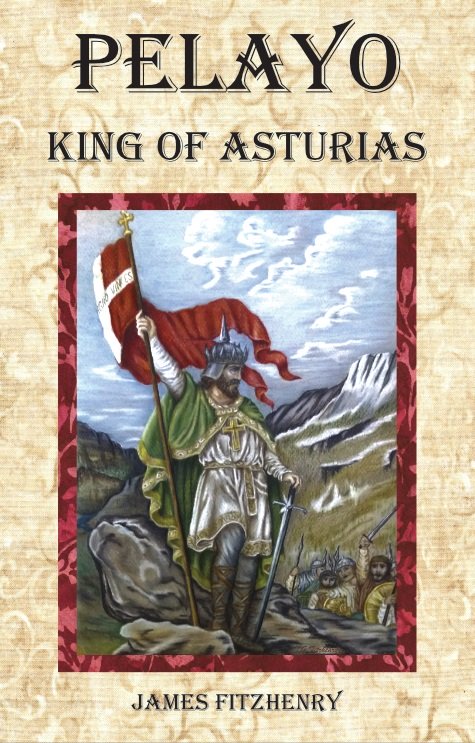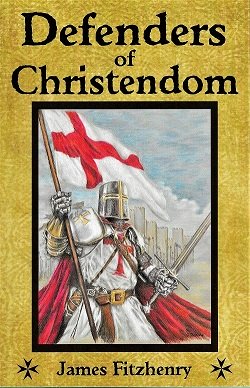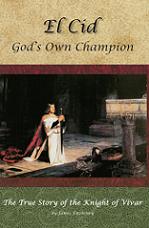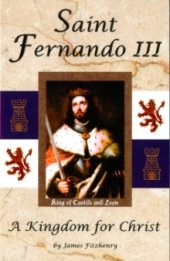Saint Stephen
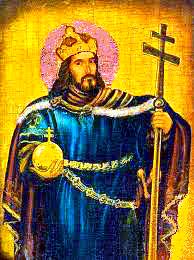
Claiming Hungary for the Faith:
Stephen, Saint
and King
by Colleen Drippe’
In times past, kingship has meant many things – head of state,
father (or grandfather) of the people, steward of the land – in short, the king
was someone set apart. Such ideas have
withered in our time, but they were once so clear to all right-thinking people
that virtually no one could fail to see and be moved by them.
It is true that some kings began life leading armies perhaps, or carousing with their future subjects, like Shakespeare’s version of Henry V – indeed, some kings were chosen and elevated by their own people. Yet once the crown settled on their heads, these men became something more than they had been. There is a mystique to kingship, a plain instance of two plus two coming out to something greater than four.
In pagan times, people often believed their kings were descended from gods, or that they actually were gods, or that they would become gods when they died. The ancient Romans frequently deified their dead emperors, building them temples and establishing their worship with priests and sacrifices. Some of the martyrs died to avoid burning incense to these dead emperors. But even a Christian king bears a mark, something not divine in itself, but coming from God nevertheless. The crown of a Christian king is more than gold, more than the heavy thing of metal pressed down on his head – it is an answerability, a promise and a duty that can be as crushing as any pagan idea of godhood, for a Christian king must answer to the true God.
Nowhere is this kingly ideal more plainly seen than in the long veneration we give to the best of Christendom’s early kings – Constantine who saw the Cross in the sky, Clovis who led the way for the conversion of the Franks, St. Wenceslaus, martyred king of the Czechs, Charlemagne who built a Christian empire on the ruins of Roman civilization, and many many more. Seldom does this great light from the past shine so brightly as it gleams from the crown of St. Istvan (Stephen), first king of Hungary.
The tale of Saint Stephen’s life and accomplishments is the tale of unending, carefully thought out work. He built and he secured what he built. He devised a strategy, a master plan – and he dedicated his life to carrying it out. He was truly the father of Christian Hungary and in death, a renowned patron and holy advocate for much of Eastern Europe.
To tell Saint Stephen’s story, one hardly knows where to begin, mainly because
tracing Hungary’s early history is a slippery business. It’s easy enough to say something about the
Magyars. We can refer glibly to tribes
and chieftains, to Asian nomads, a few battles, some missionaries, and plenty
of political maneuvering on the part of Byzantium. It would be overly simple to say that King
Stephen, like another Clovis, brought the Faith to his country in one sweeping
fiat, for neither history nor Hungarians have ever been so simple as that.
The story of Hungary’s conversion is mixed up with a great many events, with a certain amount of what would appear random history – though we know that nothing is random in the providence of God. To unravel His plan for this nation, we need first to know who they were – how did these Magyars become the Hungarians we know today? It is certainly true that their forebears wandered in from the Asian steppes just as many other peoples had been doing for thousands of years. Ancient history is full of accounts of migrating tribesmen – Scythians, Huns, and others whose names are almost forgotten. And from time to time, the migrations went the other way. The Tocharians, for example, who spoke an Indo-European language (which the Magyars do not) and certainly looked like Europeans, ended up scattered as far east as China. The national and even continental boundaries we know had not yet come into existence. To be sure, there was Asia and certainly there was Europe, but just exactly where one ended and the other began was no settled matter in early times.
Then, like most late-comers to Europe, the Magyars were not a pure nationality. Their early history, as far as we know it, was somewhat chaotic, their tribal identity far from clear. Coming together first in what is now the Ukraine, the Magyar “nation” already included Khazars, Turks, Slavs, and even Iranians. More or less united, they moved, conquering, into the valley of the Danube. They were not at all a peaceful people when they arrived.
Because the Magyars used horses, they were mislabeled Scythians, though the original Scythians were centuries gone. Because they came from the east, they were sometimes mistaken for Huns. The name “Hungary” is generally thought to derive from the Bulgarian name, “Onogur” but we really can’t be sure. To add to the confusion, when they first attracted European attention (by raiding Bulgaria during the ninth century), the Magyars were also called “Avars”. It was at this time they took for themselves, under their chief, Arpad, the region that later became modern Hungary.
To the south of the new Magyar territory, Saints Cyril and Methodius, apostles to the Slavs, had been very busy. Pannonia and Bulgaria had already been converted and the good saints having worked out a Greek-based alphabet for the Bulgarians, the Holy Scriptures were being translated into their own language. At the time, none of this had much affect on the pagan Magyars. They were just not interested.
There is no doubt the Magyars knew at least something about Christianity. They could hardly help picking up some knowledge of the Faith in the course of their depredations into France and Northern Italy. But so far no one had made much effort to convert them. The initiative actually had to come from the Magyars themselves – and it eventually did.
The thought occurred to one of Arpad’s successors, High Prince (or Duke – different sources give him a different title) Geza, who led the little nation, that his territory was hemmed in by Christians on all sides. His neighbors in the Byzantine Empire had their collective eye upon him. After a few dealings with the Orthodox, an alliance or two, and some battles that did not go especially well, the writing was on the wall. No one could deny, the High Prince concluded, that the Byzantines would gladly accept his people into the Faith – but, not distinguishing very clearly between Church and Empire, they would also gobble up his country. In a decision as politically astute as it was sweeping, Geza chose to ally himself with Rome.
We might say, because of this, that it was Geza and not really his son, the as yet unborn saint, who brought Hungary into the Church. Indeed, Geza dutifully married a Christian princess (Sarolta, mother of Vajk, later baptized Stephen), and when his first wife died, he married another Christian, this time a Polish princess. She it was who arranged for the baptism of Geza, Vajk, and quite a few of the nobles.
But Geza himself, to be quite honest, was not too well-instructed in spiritual matters. Neither were the other nobles. These conversions were definitely a matter of policy and did not go very deep. We may hope their souls were saved, for God knew just how far they were from savagery (not very) and that they had done the best they knew. But it was only young Vajk, now Stephen, who, taught by both his mother and his step-mother, had a real grasp of what it meant to be a Christian.
By the time he was twenty, Stephen was in a position to realize the plans he had made for the conversion of Hungary. Geza died in 997, having for the duration of his Christian life, maintained the worship of both Christ and the traditional Magyar gods. Asked about this (according to a story that may have been apocryphal) he was said to have replied that, rich as he was, he could afford to sacrifice to both and saw no reason why he should not. Needless to say, things were different when young Stephen came into power.
The new high prince set to work energetically, calling in missionaries and sometimes accompanying them incognito to smooth over the cultural hurdles they would of necessity encounter. Some sources add that he made some effort to protect his people from excessive zeal, believing that no one should be forcibly compelled to accept the Faith. This may or may not be true. Tenth century rulers were not known for such broad-minded scruples, particularly in matters as weighty as the religious conversion of their countries.
I include here a bit of oral history shared with me by an elderly count, now deceased, a descendant of one of Saint Stephen’s contemporaries. The count told me that his ancestors were among a group of high-born Magyars who refused to accept the Faith. For their intransigence they were ordered to be buried alive but, since they were of noble birth, they were granted the privilege of being buried on horseback, a boon they accepted with alacrity. Their children were then raised as Christians. Whether this was done with the king’s permission, the count did not say. Whether such things may be found in “official” recorded history, I would not claim to know.
Whatever the case, Prince Stephen’s attempt to incorporate Hungary into Europe was not universally popular. A rebellion, actually precipitated by the migration of German Christians into the area, nearly put a stop to his efforts. The high prince had welcomed these newcomers to his sparsely populated lands but the Magyars, still half pagan, resented the incursion bitterly. Calling on St. Martin of Tours for aid, Prince Stephen defeated the rebels in the year 998. Afterwards, he built a monastery in honor of St. Martin and filled it with German, French, and Italian missionaries. He set them to work immediately, building, teaching and sometimes – his people being what they were – suffering martyrdom.
Next on his agenda was the organization of a formal ecclesiastical structure with bishops and dioceses. Stephen asked the pope to grant him the title of king. Pope Sylvester was happy to do so. He even provided the crown (still kept and venerated in Hungary) and sent with it a bull confirming all of Stephen’s ecclesiastical organizing and appointing. King Stephen I was formally crowned in 1001.
After the crowning, the new king began a veritable frenzy of building – churches, monasteries, hospices for pilgrims. Not all of these were in Hungary itself, as he wanted to ease the route of Pilgrims going to the Holy Land. He set up tithes to support religious foundations, instituted Christian laws and took the poor, especially widows and orphans under his personal protection. He was so fond of giving alms (and of learning the real needs of his subjects) that he often went about in disguise, mingling with the common people even at the risk of his own life.
Naturally the rule of such a king in such a country could never be uneventful. The Hungarians were still newly or only partially converted tribal pagans. Amid various wars and revolts, King Saint Stephen struggled to set up a form of feudalism, making the nobles vassals of the crown while also conquering and incorporating a bit more territory through various family claims. Few tribal chieftains submit to this sort of thing willingly. But continual warfare was not only the price of nationhood but of survival itself amid the clamoring kingdoms of the time. Through battles, treaties, and some well-earned public hangings, a secure and law-abiding Christian commonwealth began to emerge.
Then tragedy struck. The king’s only son and heir, Prince Emeric, died as the result of a hunting accident in 1031. King Stephen had trained this son well for the responsibility he was to shoulder – and now his hope was gone. There was no other heir suitable among the royal relations who were for the most part an ambitious and bloodthirsty crew. One cousin had even tried to have the king assassinated. There are different accounts of what became of the would-be usurper, ranging from gracious pardon to bloody retribution, depending on who recorded the tale.
When King Saint Stephen died on Assumption Day, 1038, the young commonwealth was plunged once more into disorder. Somehow the nation survived intact (despite greedy neighbors and internal dissensions) for forty years, after which time God granted them another holy and competent king, St. Ladislas. While Saint Stephen had undoubtedly been keeping an eye on his kingdom from heaven, he surely must have breathed a sigh of relief when the new king was crowned.
There had been many miracles at King Stephen’s tomb during this time, his subjects expecting no less. He was canonized in 1083. His festivals – since he could hardly lay claim to the Feast of the Assumption – are September 2, the day when Buda (one half of the modern Budapest which was not joined together until somebody finally built the big bridge over the Danube) was retaken from the Turks in the sixteenth century, no doubt with Saint Stephen’s help; August 20, and also August 16. He is patron saint of Hungary, patron of kings, and of builders in stone. His right hand, beautifully preserved, remains as a relic. As for the rest of his body, only a few bits of bone are left, enshrined in various churches throughout the region.
In a show of ecumenism, or perhaps to show that there are no hard feelings about Prince Geza’s choice of Rome over Byzantium, the Greek Orthodox Church also saw fit to canonize King Stephen recently – in the year 2000. The attendant celebrations, awash in the ecumenical spirit, were attended by leaders of the Calvinist and Lutheran sects (both active in the region – the leader of the revolt that brought down the communist regime in neighboring Rumania was a Hungarian Lutheran), Orthodox dignitaries and also a representative of the Vatican. Considering that veneration of Hungary’s saint king spreads far beyond the borders of his country, this additional “canonization” is not really so surprising.
Hungary’s history has remained turbulent and the people, forged into a sturdy nation, have suffered much during the millennium since King Stephen’s crowning. There have been Turkish invaders, world wars, a Communist revolution, and long domination by the Russians. A multitude of scars remain both on the country itself and in the souls of the people, many of whom have lost the Faith. Now that Hungary is threatened anew by the culture-destroying European Union as well as Europe’s new incursion of Islam, we might ask Saint Stephen to watch over his people once more and to bring them through trials still to come.
Return to Roman Catholic Saints Home Page from Saint Stephen
Now Available!!
Pelayo's resistance initiated the nearly 800-year-long Reconquista to take back his country from the ruthless invader who had conquered his homeland and sought to erase his culture and his faith. His actions would lay the foundations of a Kingdom for Christ that would eventually reach around the world and spread the Catholic faith to millions of souls. Read more...
Please help us continue to bring high quality books to our readers at the lowest possible price! Click the link below! Thank you!
Now Available!
Catholic Vitality Publications presents . . .Brand new by
James Fitzhenry
Now in paperback!
Battles - Honor - Miracles! This
book is filled with amazing stories of little-known Catholic heroes presenting
spectacles of bravery and valor never exceeded in all the annals of history. read more. . .
Now Available for $24.95
Also available:
Catholic Vitality Publications
Roman Catholic books currently published by Catholic Vitality Publications:
El Cid, God's Own Champion
-the amazing true story of the life of Rodrigo Diaz, El Cid!
Available for only $22.95
St. Fernando III
A Kingdom for Christ
- King St. Fernando III, born 100
years to the month after the death of
the Cid. His life was filled with miracles
and many conquests!
Available now for $26.95
Discounts available for bulk
orders and for bookstore
retail sales! Just contact us

